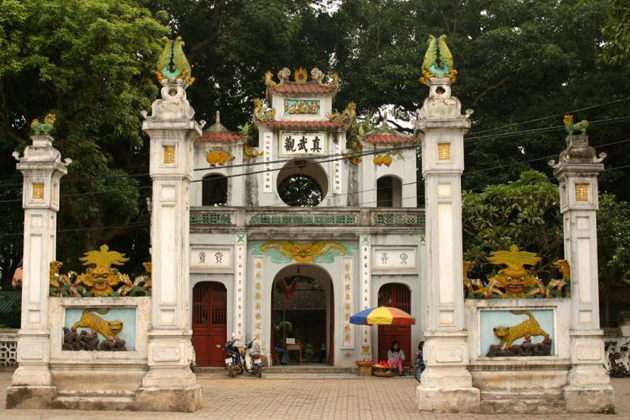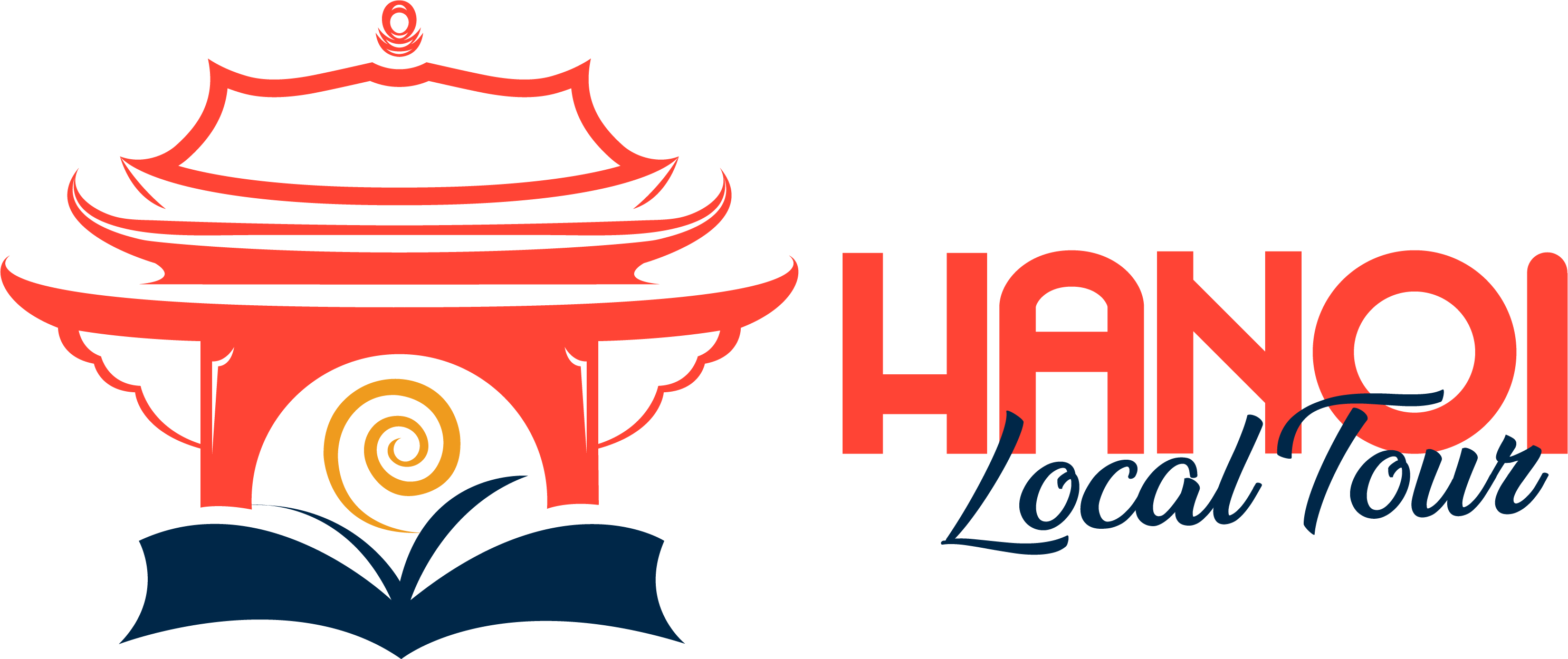The capital Hanoi has many ancient and romantic attractions such as West Lake, Hoan Kiem Lake, the Temple of Literature. However, there is also famous cultural and historical site which makes people respect and gratitude. That is Thang Long Four Temples – four sacred temples worshiping 4 gods controlling 4 significant positions on the land of Thang Long thousand years of civilization to shelter, protect for the Thang Long citadel, Hanoi today.
Thang Long Four Temples consist of four temples in four directions including Bach Ma Temple in the east; Voi Phuc Temple in the west; Kim Lien Temple in the south; and Quan Thanh Temple in the north. The four temples were built very early, associated with the movement of capital Thang Long under the Ly Dynasty from 1010. Thang Long four temples were the venue for the spring festival, the place where the King chose to offer incense in the early days of the year. Perhaps since then, this tradition was continued until today. Each temple worships a god with different origin and meanings.
Bach Ma Temple in the east
Bach Ma Temple is now at 76 Hang Buom Street in Hoan Kiem district. The temple worships Long Do – a protective deity for the east of the Imperial City. He is a sacred divine and was revered and admired by the citizens in the ancient time. Legend has it that when King Ly Cong Uan moved the capital to Thang Long (1010), he could not build the citadel because of the landslide. Then, the King came here to pray and amazingly, one morning, he suddenly saw a white horse going from the temple and running around the area of the citadel, later, it returned to the temple and quickly disappeared. The King built the citadel following the footsteps of horse and it was completed and very solid. Afterward, the King ordained Long Do as the god protecting Thang Long. From that time, White Horse is a sacred symbol of the Temple. Bach Ma Temple has been rebuilt several times, but still retains the architectural appearance during the Tran, Le dynasties. Bach Ma Temple Festival is held every year on the 12th and 13th of the Lunar February.
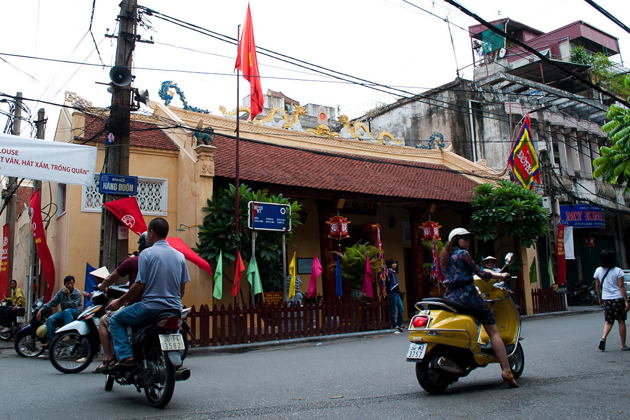
Voi Phuc Temple in the west
Voi Phuc Temple, also known as Thu Le or Linh Lang because it worships Linh Lang. The temple is located in the west of the former Thang Long capital, on Thu Le Lake, in Ba Dinh District. Legend records that Linh Lang god was an angel reincarnated as the baby of the 7th concubine of King Ly Thai Tong and was named Linh Lang. Similar to the hero of Giong village, as the country had foreign invaders, the little prince became a valiant man riding an elephant and destroying invaders. After the victory, the prince suddenly fell ill, his father came to visit, he said he was not the human being, then turned into a dragon slithered into the Dam Dam Lake (former name of West Lake) and disappeared. Linh Lang temple was built in 1065 under the reign of King Ly Thanh Tong. The doors of the temple had two kneeling elephants so the people called Voi Phuc Temple. Experiencing the events of history, war, and rebuilt several times, now the architecture of the temple has changed a lot compared to the original architecture. Voi Phuc Temple Festival is held on 9th to 11th in Lunar February.
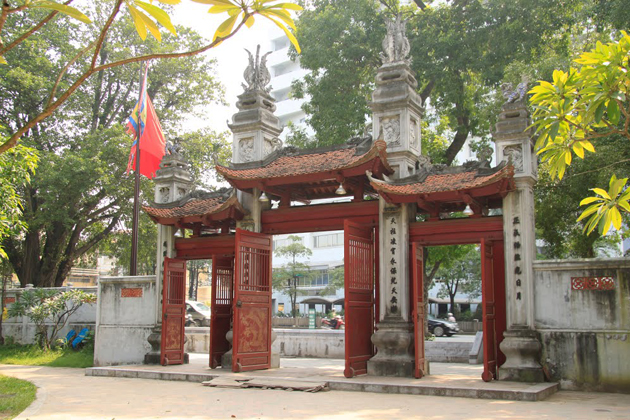
Kim Lien Temple in the south
Kim Lien Temple or Cao Son Temple is located on Phuong Lien street of Dong Da district. The temple worships Cao Son divine. According to legend, the god Cao Son contributed to the victory of Son Tinh against Thuy Tinh and later helped King Le Tuong Duc pacify and restore the Le dynasty. Therefore, the king allowed the construction of the temple so that the citizens can visit to worship and pray. Affected by the vicissitudes of history, the temple is no longer in the original form until now. The temple retains about 39 ordained documents about the deity as well as the parallel sentences. Kim Lien Temple festival opens on 16th in Lunar February.
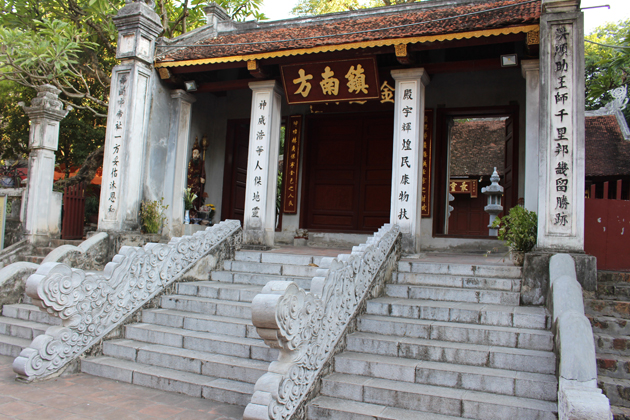
Quan Thanh Temple in the north
Quan Thanh Temple or Tran Vu Temple is located at the intersection of the Thanh Nien road with Quan Thanh Street of Ba Dinh District. The temple worships Huyen Thien Tran Vu. Legend has it that Huyen Thien Tran Vu is the god of the North who helped people exorcise and eliminate demon; nine – tail fox in West Lake; helped An Duong Vuong construct Co Loa citadel; and so on. Until the Le Dynasty, the king also often came here to pray for rain when there was a drought. Quan Thanh Temple is situated in a beautiful location, right on West Lake with spacious, airy, poetic, and charming landscapes. The temple was repaired several times and the current architecture is of the Nguyen dynasty. The temple has a bronze statue of Tran Vu which is a unique work of art, marked bronze casting techniques and talents of Vietnamese people three centuries ago. Quan Thanh Temple Festival is held on the 3rd of Lunar March.
The worship of 4 gods protecting the Thang Long Citadel from 4 directions is the uniqueness of the spiritual culture of Thang Long, is a way to show reverence to the gods who guard the city through day and night to protect the life of people. Furthermore, the four temples carry the distinctive features of the culture, history, architecture and sculpture associated with a folk legend which attracts a large number of people visit here to learn about Thang Long thousand years of civilization.
